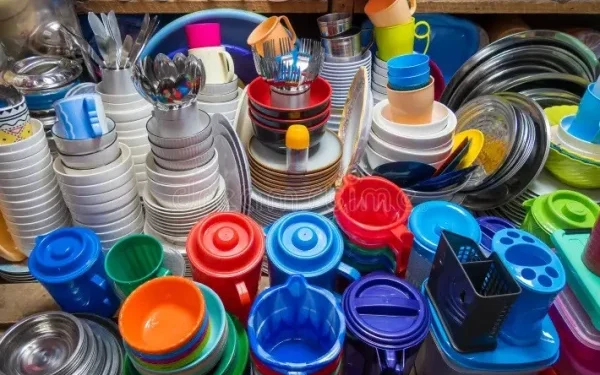Introduction: The Hidden Danger in Daily Life
A new study has revealed an alarming connection between household plastic exposure and cardiovascular health. Items that are part of our everyday lives—water bottles, food packaging, shampoo containers, and even children’s toys—may be contributing to millions of heart disease-related deaths annually. This startling discovery sheds light on the global health implications of microplastics and other chemicals found in household plastics.
Key Findings of the Study
The peer-reviewed research, published in the prestigious journal eBioMedicine, analyzed health data from 2018. According to the study, chemicals commonly found in plastics were responsible for 13% of all heart disease deaths among adults aged 55 to 64, out of a total of 368,764 cases. The findings were not just theoretical—they demonstrated real-world impacts, with about 10% of these deaths occurring in the United States alone.
Sarah Hyman, associate research scientist at New York University’s Grossman School of Medicine, emphasized the broader implications: “By highlighting the link between plastics and the leading cause of death worldwide, heart disease, our findings provide broad evidence that these chemicals pose a significant risk to human health.”
Regional Impact: Developing Nations Hit Hardest
One of the most disturbing revelations from the study is that roughly 75% of the plastic-related deaths occurred in developing nations, particularly in regions like Asia, the Middle East, and the Pacific. This suggests a disproportionate burden on low- and middle-income countries where plastic regulation may be lax, and public awareness is limited.
Leonardo Trasande, another lead author and professor at the NYU Grossman School of Medicine, expressed concern about global trends: “We often consider plastics to be a problem confined to high-income nations, but the data paints a very different and troubling picture.”
How Plastics Affect Heart Health
Plastics contain various chemical additives, including phthalates and bisphenols, which are known to disrupt hormonal function. These endocrine-disrupting chemicals (EDCs) can lead to increased blood pressure, inflammation, oxidative stress, and ultimately, cardiovascular disease. Over time, chronic exposure to these toxins may impair blood vessel function, promote atherosclerosis, and heighten the risk of heart attacks and strokes.
Microplastics and Human Exposure
Microplastics—tiny plastic particles resulting from the breakdown of larger plastic items—are now found in water, air, soil, and even in human bloodstreams. These particles can enter the human body through ingestion or inhalation and have been linked to a host of health problems, ranging from inflammation to immune system dysfunction.
The omnipresence of microplastics makes it nearly impossible to avoid exposure, particularly in areas with poor waste management systems. In countries with limited recycling facilities and heavy plastic use, microplastic contamination is becoming a public health crisis.
Global Health Implications
The study’s findings raise serious questions about the long-term global health implications of plastic pollution. If 13% of heart disease deaths among middle-aged adults are linked to plastics, then mitigating this risk must become a public health priority. This calls for urgent interventions at national and international levels, including stricter regulations on plastic manufacturing and use, improved waste management, and widespread education campaigns.
Policy Recommendations
Experts are urging policymakers to take immediate action to curb plastic exposure. Recommendations include:
- Banning or restricting harmful plastic additives like phthalates and BPA.
- Improving recycling and waste disposal infrastructure in developing nations.
- Encouraging industries to adopt safer, biodegradable packaging alternatives.
- Investing in research on plastic alternatives and public health impacts.
- Launching awareness campaigns to educate people on minimizing plastic use at home.
Industry Responsibility
While consumers can take steps to reduce plastic exposure, much of the responsibility lies with manufacturers. Companies that produce plastic goods must be held accountable for the environmental and health consequences of their products. The transition to sustainable materials should not be a choice, but a mandate enforced through robust legislation.
What Individuals Can Do
Until large-scale policies are enacted, individuals can take proactive steps to reduce their exposure to plastic-related chemicals:
- Use glass or stainless steel containers instead of plastic ones.
- Avoid microwaving food in plastic containers.
- Choose personal care products labeled “phthalate-free” and “BPA-free.”
- Minimize consumption of processed and packaged foods.
- Support eco-friendly brands that prioritize sustainable packaging.
Conclusion: Time for Urgent Action
This groundbreaking study serves as a wake-up call to the global community. The widespread use of household plastics is not just an environmental concern—it is a critical public health issue. With millions of lives potentially at risk from plastic-related heart disease, it is imperative for governments, industries, and individuals to work together to reduce exposure and create a safer, healthier future.
The evidence is clear: plastics are silently damaging human health, particularly cardiovascular health. Immediate, coordinated action is needed to prevent further loss of life and to protect future generations from the toxic legacy of plastic pollution.

























